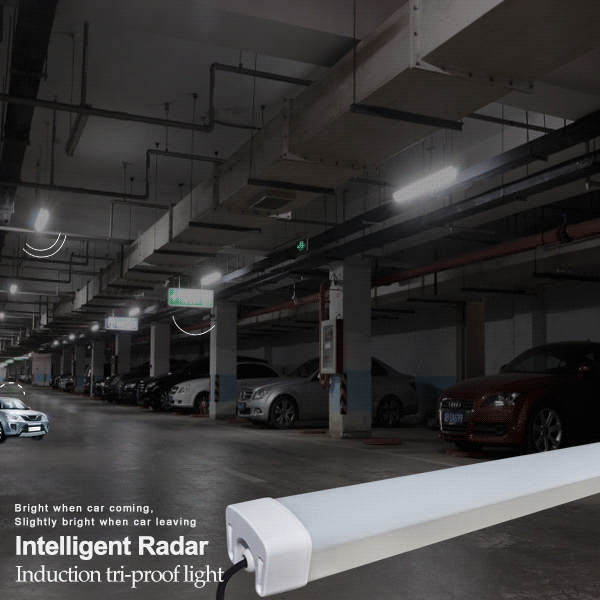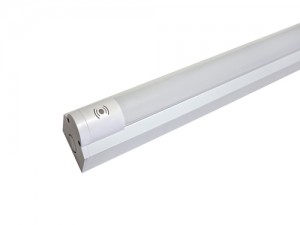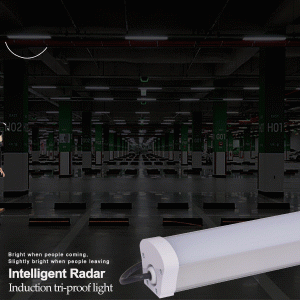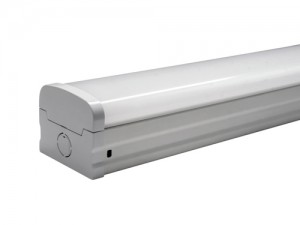Whatever work you do in your garage, it helps to have sufficient lighting. Dismal, dimly-lit garages are not only difficult to work in, they can be hot spots for injuries. You could trip over a cord or a hose, accidentally cut yourself on an object you didn’t see—poor lighting in this space can be dangerous.
The best garage lighting will transform a dark space with potential hazards into a safer, brighter environment you can feel comfortable working in—and fortunately, there’s a ton of quality products to choose from. You can swap out fluorescent fixtures for energy-efficient LEDs, install a screw-in, multi-position light bulb, and otherwise—easily and affordably—upgrade the illumination in your garage. So read on to get a sense of the features to look for and to find out why the following options reign supreme as some of the best garage lighting available.
What to Consider When Buying Garage Lighting
While shopping for the best garage lighting, keep these important factors in mind.
Brightness
Garages receive little or no natural light, so when upgrading your lighting setup, choose fixtures that put out a lot of bright light. The lighting industry measures brightness by lumens—a measure of light produced during a specific period of time. Bottom line: The more lumens, the brighter the lighting will be.
Lumens are not the same as watts. Watts measure energy used, lumens measure brightness. However, for the sake of comparison, a 75-watt bulb produces about 1100 lumens. As a general rule, the ideal lumen range for workshop and garage lighting is around 3500 lumens.
Color Temperature
Color temperature refers to the color the light produces and is measured on a Kelvin scale. Temperatures range between 3500K and 6000K, with the lower end being warmer and more yellow and the higher-end cooler and bluer.
Most garages tend to be gray and industrial, so cooler lighting temperatures are usually the most flattering, while warmer temperatures can give the floor a dingy look. Aim for a temperature in the area of 5000K. The light produced by a 5000K bulb will be slightly blue but not glaring or harsh to your eyes.
Some fixtures come with adjustable color temperatures, allowing you to bounce through the range and choose the color temperature that works best for you.
Energy Efficiency
Regardless of what lighting system you choose for your garage, a modern fixture will use far less energy than older incandescent bulbs. Fluorescent bulbs can cut energy consumption by around 70 percent over an incandescent bulb producing the same amount of light. LED bulbs are even better, cutting as much as 90 percent of the energy consumption of a comparable incandescent bulb. Factor in that they last much longer (over 10,000 hours compared to an incandescent bulb’s 1,000 hours), and the savings are tremendous.
Installation and Connectivity
Installation and connectivity may play a large role in deciding on the best garage lighting fixtures. If you don’t have a lot of electrical experience, there are easy-to-install options that produce great results. The Easiest way to upgrade your garage lighting is with screw-in bulb replacements. These aren’t just bulbs, but multi-positional LED fixtures that screw into your basic light base. They don’t require any extra wiring or much effort on your part.
There are other plug-in systems that you can string throughout your garage to produce a tremendous amount of light. These systems work through standard outlets: Simply plug them in and turn on their light switch. They often include “jumper” wires that will connect a set of lights together, illuminating your entire garage, and most times, they install with simple clips.
Fluorescent lighting, on the other hand, requires a bit more during installation. These lights have ballasts that regulate the voltage to the light bulb. You must hardwire these lights into your garage circuit. While not overly complicated, it is a more involved process.
Longevity
An LED bulb can last 25 to 30 times longer than an incandescent, all the while reducing the amount of energy consumed. A fluorescent bulb can last as long as up to 9,000 hours compared to an incandescent bulb’s 1,000 hours. The reason LEDs and fluorescents last so much longer than incandescent varieties is that they don’t have a sensitive, fragile filament that can break or burn up.
Climate
If you live in an area that experiences bitterly cold winters and you have an unheated garage, LED bulbs are the most suitable choice. In fact, LEDs become more efficient in colder temperatures. Since they don’t need to heat up, they become bright immediately and produce consistent, energy-efficient light in very cold temperatures. By contrast, many fluorescent lights cannot operate if the air temperature is below 50 degrees Fahrenheit. If you live in an area where the temperature drops well below freezing, the best garage lighting system is an LED setup.
Other Features
While upgrading the overhead lighting system, if you work on projects in the garage, remember to make sure your workstation is adequately illuminated as well. You could hang a chain from the ceiling to lower a fixture, attach an LED light below a cabinet—however you prefer to establish direct task lighting. There are plenty of great options, and you can even use a combination of systems. While a general overhead fixture is great, adding an illuminated, positionable arm (like those used by fly-tying fishermen) can make it easier to see small parts.
Motion sensors can also make garage lighting more convenient and safer. Some LED systems have sensors that will turn the lights on when they detect someone walking or moving in the garage. Not only will you be able to illuminate your garage without fumbling for a light switch, but motion sensors can also deter unwanted guests from helping themselves to your tools and other belongings.
If the only option you’re comfortable with is replacing your incandescent bulbs with screw-in LED units, choose some with multi-positional wings. These fixtures can make a huge difference in your garage lighting’s effectiveness. If you find that you’re not getting enough light in a particular area, you can position a wing in that direction to improve illumination. Since LEDs don’t get nearly as hot as incandescent or fluorescent bulbs, they’re often cool enough to touch bare-handed after just a few seconds. This also keeps your LEDs running as efficiently as possible.
Motion Sensor Batten Light For Garage
If ready to replace an older fluorescent fixture, this Ceiling Light Fixture from Eastrong is a good choice. This 4-foot lighting fixture replaces traditional fluorescent lamps and LED tubes, no need extra lamp holder, and its housing boasts a high-gloss, baked-on enamel finish to resist heat and reflect as much light as possible.
This LED batten light is an automated energy-saving batten light. A truly customizable energy-efficient lighting solution, it features a 5.8Ghz microwave motion sensor, light sensor and control electronics to compound the already superb energy savings of switching to LED over fluorescent.
LED Triproof Garage Lighting
Three things are important for a workbench light: an easy power switch, the ability to hang it, and plenty of light. You’ll get all three from our shops. This light measures 4 feet long—enough to illuminate most work surfaces. The included hanging hardware allows you to suspend it from the ceiling or from under a shelf. The 40-watt LEDs produce plenty of light at 4800 lumens, with a cool-toned 5000K temperature. The pull-chain operated on-off switch is easy to use, so you won’t be fumbling around for it in the dark.
4FT 40W Motion Sensor Batten Light
- High-Quality T8 Replacement LED Ready Batten Fitting Including LEDs With Frosted Cover and Built-In Movement Sensor Microwave Technology
- 1200mm 4 foot In 40W 4000K Daylight White Very Bright SMD Technology 30,000 Hours Life Span
- Surface Mount Ceiling Mount Or Hang
- Fitting In Offices, Corridors, Factories, Warehouses, Underground Tunnels, And Car Parks
- Hold time: 5s to 30 minutes, Stand-by dimming level: 10%-50%
Post time: Nov-19-2020








